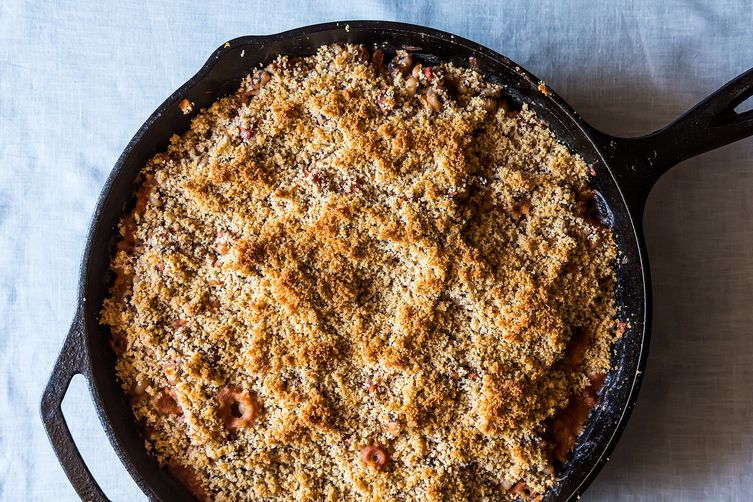I took a minor detour this past week. My son celebrated his 11th birthday and only having one (indulged) child, we spent the entire week partying. His official party was Hobbit themed and we went all out! The house was transformed into Bilbo's house, The Prancing Pony, and kinda Middle-Earthy. He invited four of his best buds for a sleepover, but we had Moms, Dads, and siblings come for a proper pre-sleep Hobbit Feast.
 |
| That is my lil Bilbo on the right |
Hobbits eat. And eat (seven meals a day! Go Hobbits.). Which made planning the party quite challenging. I relied on some very knowledgeable friends and my super-sweet brother in law for the "rules" on what and how to serve. Here was the lineup:
First Breakfast- Egg, Bacon & Cheese Quiche
Second Breakfast - Apple Caramel Pie
Elevensies- Creamy Stuffed Mushrooms
Luncheon- Cold Potato Leek Soup & Tomato, Cucumber & Feta Salad
Afternoon Tea- Assorted cookies and Sweet Tea
Dinner- Mini Sausages Wrapped in Pastry and Tater Tots
Supper-Coney Stew (which was Sheppard's Pie in disguise)
In addition we added Lembas bread (an Elven creation prominent in the LOTR series wrapped in leaves. I used a soda bread recipe of Jacque Pepin's), chili bean dip & chips, and Ms. Dupree's Pimento Cheese that I highlighted in my first ever post!
My boy's mile high birthday cake was constructed out of two recipes from Mastering the Art of Southern cooking: Damon Lee Fowler's Updated 1-2-3-4 Cake, and Cream Cheese Frosting. I created a Hobbit door and "No Admittance Except Under Party Business" sign out of fondant and food coloring to top the cake. The cake was so luscious! The crumb was tender but firm enough to easily frost. The flavoring was that of a light vanilla pound cake. The frosting is a perfect combination of buttercream and cream cheese frostings-not too sweet and not too heavy but with a lovely shine and body. The technique for the cake involves patience (long creaming time, etc) but is otherwise a simple task. The recipe will yield 3 -9" inch cakes, perfect for a big, old fashioned birthday cake.
 |
| Just made it with the candles thisclose |
 |
| Acting the fool, as usual. |
This is the third time I have used the Updated 1-2-3-4 recipe and I love it. I have made another birthday cake (with the caramel frosting from Mastering...oh. my, goodness. That will have it's own post.) I also made cupcakes for the birthday fella this week. We kept with the LOTR/Hobbit thang and did "Precious" cupcakes for his class. The rings were again, fondant. I used an edible gold dust to give it some glitter. The kids were all too excited to eat the jewelry.
 |
| Precious |
Sadly, I don't have great photos of the cake and event in general. I was too busy cooking, serving, and acting a silly Mom-fool. With 25 guests, we were swamped! The cake was out of this world, thanks to Mastering the Art of Southern Cooking.
I promise to get back on my game this week and make some special dishes from MTAOSC. I have Country Captain on the brain and Ms. Dupree's version is hands-down the best I've ever tried.
 |
| Lembas |
Jacque Pepin's Quick Soda Bread
3 cups all-purpose flour
1 1/2 teaspoons salt
1 1/2 teaspoons baking powder
1 1/2 cups milk
1/2 teaspoon canola oil (I am on an organic palm oil kick, which I used very successfully)
1 1/2 teaspoons salt
1 1/2 teaspoons baking powder
1 1/2 cups milk
1/2 teaspoon canola oil (I am on an organic palm oil kick, which I used very successfully)
Preheat the oven to 425 degrees.
Reserve 1 teaspoon of the flour, and combine the remaining flour with the salt and baking powder in a large bowl. Add the milk and mix gently but quickly with a wooden spatula or spoon until the dough comes together.
Oil a nonstick cookie sheet with the canola oil (or line a regular cookie sheet with parchment and brush with the oil), and place the dough on the sheet. Using a piece of plastic wrap, press and mold the dough to create a round loaf about 7 inches in diameter and 1 inch thick. Sprinkle the reserved teaspoon of flour on top of the loaf. Using a serrated knife, make 2 intersecting 1/4-inch-deep cuts across the top of the loaf to create a cross.
Place a stainless steel bowl upside down over the bread and bake for 30 minutes. Remove the bowl and bake for another 30 minutes, or until golden brown.
** I oiled my Le Creuset deep covered saute pan and baked right in it. LOVE this thing! It was a gift from my sister and and best BIL.
 |
| You sexy thang |
Using a wide spatula, remove the bread to a rack. Let cool for at least 30 minutes before slicing.
-Jill
 |
| My wonderful friends who truly inspired our day. They are HARDCORE!!! Here is their AMAZING vacation video. They did this ALL!! |










































